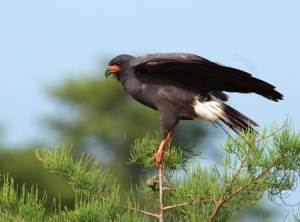
Florida wildlife and water managers are worried about an invasive snail that is wreaking havoc on the state's billion-dollar effort to remove chemicals from the fragile Everglades.
The South American apple snail first appeared in large numbers in
2010, according to Audubon Florida science coordinator Paul Gray, and
was initially seen as a potential savior of an endangered bird, the
snail kite.
During the prior decade the number of kites, a gray bird with a hooked
beak, had fallen to about 700 from 3,400 as their main food source, the
native apple snail, became scarce after years of drought and hurricanes.
The abundance of South American apple snails, a popular
aquarium pet native to Brazil and Argentina, helped the bird’s numbers
recover to 1,200 this year.
"These snails are new, and this is the first time something like this has ever happened in Florida," Gray said.
In 2010 Florida Audubon, part of the National Audubon
Society conservation group, successfully lobbied the Florida Fish and
Wildlife Conservation Commission to hold off reducing their food source,
Gray said.
"The
snails are all the kites eat, when they're starving they try to eat
turtles or crayfish but that can’t sustain them," he added.
However, last summer hordes of the snails, which are
larger and survive better than the native species, devoured much of the
vegetation in a 750-acre man-made marsh designed to filter phosphorous
out of the Everglades.
“There were millions of these snails in there,” said Larry Gerry,
a storm water treatment coordinator for the South Florida Water
Management District.
Officials now fear the snails, if not contained, could pose a
threat to the rest of the 57,000 acres of marshes built at a cost of $2
billion to rid the fragile wetland of agricultural runoff.
The high levels of nutrients, which are removed by the
same plants the snails like to feed on, can cause algal blooms that clog
the water system and starve out existing wildlife.
“We’re hoping that this is an unusual event, if it’s not then we have a real challenge ahead of us,” Gerry said.
In another effort to help preserve Florida’s vast swamps,
the Everglades Foundation last week launched an international
competition offering $10 million to anyone who devises a new method for
removing phosphorous from the swamp waters and recycle it for
agricultural use.

No comments:
Post a Comment